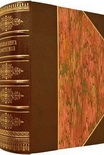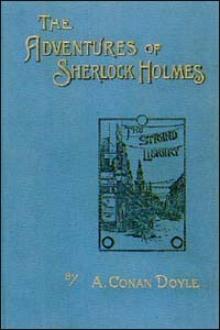My Autobiography, Charles Chaplin [books to read in your 20s .TXT] 📗

- Author: Charles Chaplin
Book online «My Autobiography, Charles Chaplin [books to read in your 20s .TXT] 📗». Author Charles Chaplin
Hearst looked up: ‘Are you referring to me?’ he said.
‘Yes, you! Come here!’ she answered, keeping her large blue orbs on him. His staff backed away and the room hardened into silence.
Hearst’s eyes narrowed as he sat sphinx-like, his scowl growing darker, his lips disappearing into a thin line as his fingers tapped nervously on the arm of his throne-like chair, undecided whether to burst into fury or not. I felt like reaching for my hat. But suddenly he stood up. ‘Well, I suppose I shall have to go,’ he said, oafishly hobbling over to her. ‘And what does my lady want?’
‘Do your business down town,’ said Marion disdainfully, ‘not in my house. My guests are waiting for a drink, so hurry up and get them one.’
‘All right, all right,’ he said, clownishly hobbling off into the kitchen, and everyone smiled with relief.
Journeying on a train once from Los Angeles to New York to attend to some urgent business, I received a wire from Hearst inviting me to go with him to Mexico. I wired back, regretting that I had business to attend to in New York. In Kansas City, however, I was met by two of Hearst’s agents. ‘We’ve come to take you off the train,’ they said, smiling, explaining that Mr Hearst would have his New York lawyers attend to all my business there. But I could not go.
I have never known a person throw wealth around in such a dégagé manner as did Hearst. Rockefeller felt the moral burden of money, Pierpont Morgan was imbued with the power of it, but Hearst spent millions nonchalantly as though it were weekly pocket money.
The beach-house that Hearst gave Marion at Santa Monica was a palace built, symbolically, on the sands by imported Italian artisans, a seventy-roomed Georgian structure, three hundred feet wide and three storeys high, with a gold-leaf-gilded ballroom and dining-room. Paintings by Reynolds, Lawrence and others were hung everywhere – some fakes. In the spacious oak-panelled library, when a button was pressed, a section of the floor rose up and became a screen for moving pictures.
Marion’s dining-room could seat fifty guests comfortably. Several elaborate suites accommodated at least twenty guests. An Italian marble swimming pool, over one hundred feet long with a Venetian marble bridge across the centre of it, was set in an enclosed garden facing the ocean. Adjacent to the swimming pool was a combination bar-room and small cabaret dance floor.
The Santa Monica authorities wanted to build a harbour for small naval craft and pleasure boats, a project supported by the Los Angeles Times. Owning a small cruiser myself, I thought it a good idea and told Hearst so at breakfast one morning. ‘It would demoralize the whole neighbourhood,’ said he indignantly, ‘having sailors peeking in these windows as though the place was a brothel!’ Nothing further was said on the subject.
Hearst was remarkably natural. If in the mood he would do his favourite Charleston dance with charming gaucheness, regardless of what people thought of him. He was nothing of the poseur and was activated only by what interested him. He gave me the impression of being a dull man – perhaps he was, but he made no effort to be otherwise. Many people thought that the daily editorials signed by Hearst were written by Arthur Brisbane, but Brisbane himself told me that Hearst was the most brilliant editorial writer in the country.
At times he was surprisingly childish and his feelings could be easily hurt. I remember one evening while we were choosing sides for a game of charades, he complained that he had been left out. ‘Well,’ said Jack Gilbert facetiously, ‘we’ll play a charade on our own, and act out the word “pill-box” – I’ll be the box and you can be the pill.’ But W.R. took it the wrong way; his voice quivered. ‘I don’t want to play your old charades,’ he said, and with that he left the room, slamming the door behind him.
Hearst’s four-hundred-thousand-acre ranch at San Simeon extended thirty miles along the Pacific Coast. The living quarters were set back on a plateau like a citadel, five hundred feet above sea level and four miles from the ocean. The main château was built from several castles shipped over in crates from Europe. The façade looked like a combination of Rheims Cathedral and a gigantic Swiss chalet. Surrounding it like vanguards were five Italian villas, set in on the edge of the plateau, each housing six guests. They were furnished in Italian style with baroque ceilings from which carved seraphs and cherubs smiled down at you. In the main château were rooms for thirty more guests. The reception room was about ninety by fifty feet, hung with Gobelin tapestries, some genuine, others faked. In this baronial atmosphere were backgammon tables and pin-ball games at each end of the room. The dining-room was a small replica of the nave of Westminster Abbey and seated comfortably eighty guests. The house personnel numbered sixty.
Within hearing distance of the château was a zoo, containing lions, tigers, bears, apes, orang-outangs, birds and reptiles. From the lodge gates to the château was a five-mile drive flanked with notices: ‘Animals have the right of way.’ One waited in one’s car while a brace of ostriches made up their minds to get off the roads. Ewes, deer, elks and buffaloes roamed the estate in herds and impeded one’s progress.
There were cars to meet the guests at the railway station, or, if you came by plane, there was a private landing field. If you happened to arrive between meals, you were shown your quarters and instructed that dinner was at eight and cocktails would be served in the main hall at seven-thirty.
For amusement, there was swimming, horseback riding, tennis and games of every description, or a visit to the zoo. Hearst made a rigid rule that no





Comments (0)